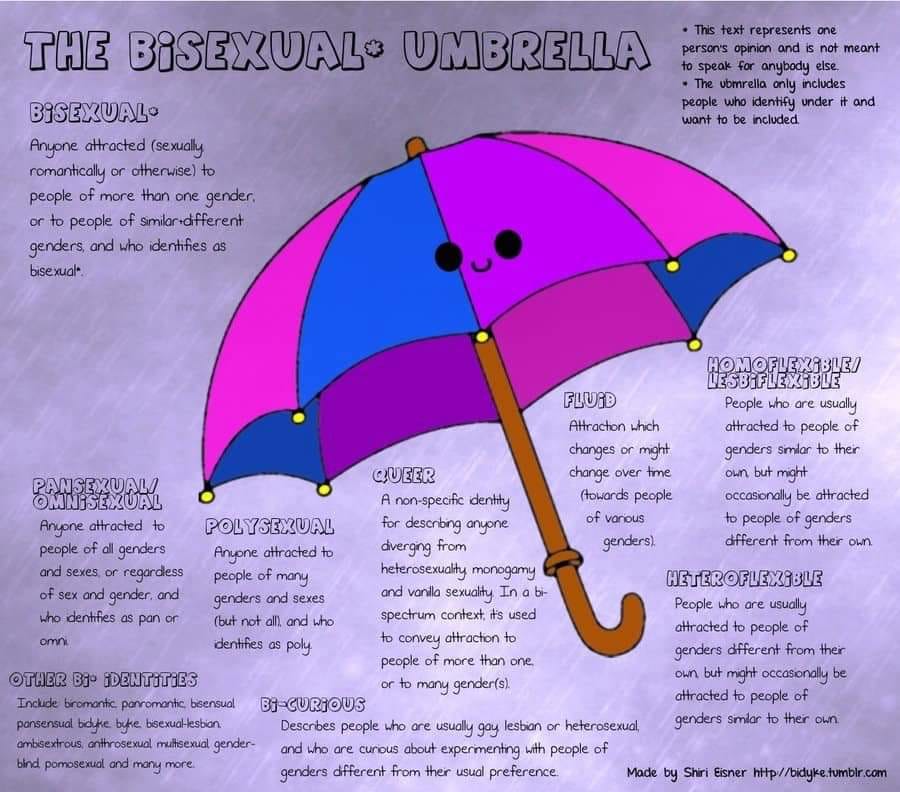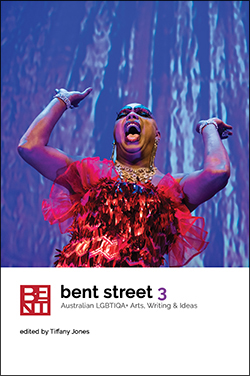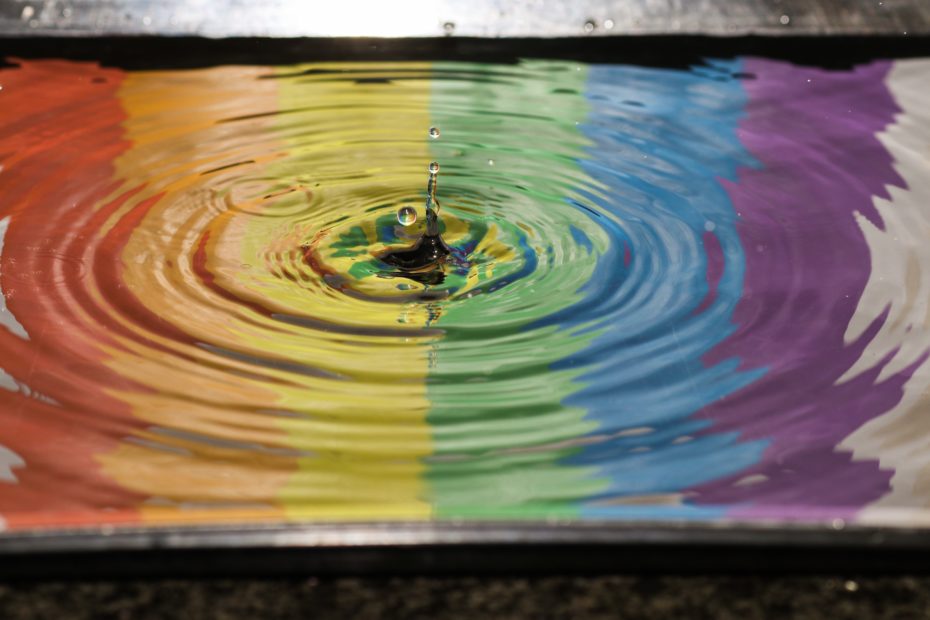Will I be allowed to be part
of your us
Binegativity speaks to the experience of anti-bisexual sentiment and discrimination. Anecdotally, this has ranged from assumptions of promiscuity, to implications and accusations of being “bad at” being straight/homosexual, being indecisive (about sexuality ergo anything else important in life), being a tease, to being immoral. Researchers have found bisexual individuals face increased rates of mental health and stigma-related stressors due to binegativity, greater than that of both heterosexual and homosexual (lesbian/gay) individuals (Dyar, Feinstein, & Davila, 2019). BPOC are reported to face the additional challenge of unique cultural gender role expectations regardless of the relationship dynamics in which they may be currently participating, if any (Ghabrial & Ross, 2018).
Bisexual individuals face discrimination and negativity in a unique way, in that they encounter it not only from heterosexual components of society, but also the queer community (Dyar, Feinstein, & Davila, 2019). It is suggested that this makes it particularly difficult for bisexual (including those who identify as pansexual) individuals to find and develop supportive communities. In Perth, two academics and activists, Dr Duc Dau and Mx Misty Farquhar, established a Facebook community group (Bisexuality+ Community Perth) to counter this phenomenon and this group marched again in the recent 2019 Pride Parade.
A Word from your Host and Writer:
I pause here to clarify that my personal working definition
of bisexuality refers to a capacity for attraction and affection for
same/similar and other genders, and in no way excludes intersex, non-binary or
trans individuals. I respect that others use other terms such as pansexual to
denote a similar definition. I include an image below by Shiri Eisner as a
useful reference regarding terminology. I do not share this as a definitive nor
declarative resource of definitions but I find it aligns quite well with my own
working understandings and usage of the terms contained within.

I thought about a lot of things, back in October when I penned a poem freshly provoked upon reading more about the history of Celebrate Bisexuality Day, marked on the 23rd of September each year. As I watched the brewing sentiments of distrust, discontent, hurt, rejection, exclusion, retraumatisation, blame, and more unfold with the lead-up to the Pride Parade this year, I thought on how easily we can feel, as a community or as individuals unsure about whether we are truly included and warmly welcomed. Should we ever feel a hint of question about our position of inclusion, it hurts deeply and it pulls up threads of fear, shame, pain, and often anger and vilification. I also witnessed cautious optimism and thoughtfulness, kindness and understanding extended to all involved. I saw generosity as groups and individuals strove to ensure concerns about exclusion did not coalesce into anything more than rumours and uneventuated worry.
Bent on the page
I wrote a poem called #CBD and I am pleased to share the news that it has been published in the 3rd volume of Bent Street. The poem was seeded in researching the origins of Celebrate Bisexuality Day and conversations with other bi/pan community members about the tensions of identity, celebration, community, activism and advocacy, and specifically the visibility and inclusion of bisexuality within the broader queer community, whilst maintaining emotional and psychological safety.
To read more on inclusion, the challenges of safety, and interpretations of community related to Pride 2019 in Perth, please visit “The Pride of being included“

Bent Street is an annual publication of Australian LGBTIQA+ art, writing and ideas. It gathers essays, fiction, poetry, artwork, reflections, letters, blog posts, interviews, performance writing and rants to bring you ‘The Year in Queer’.” The publication was founded in 2017 in response to the postal survey which led to the passage of the Marriage Amendment (Definition and Religious Freedoms) Act 2017 allowing same sex marriage in Australia (Federal Register of Legislation).
#CBD is available in Volume 3, as of 25th November 2019.
Online purchasing:
Melbourne launch event:
Sunday, 8th December
4pm
Hares & Hyenas Bookshop, 63 Johnston Street, Fitzory 3065, Victoria
FREE Event

Non-linked References
Dyar, C., B.A. Feinstein, & J. Davila. (2019). Development and validation of a brief version of the anti-bisexual experiences scale. Archives of Sexual Behavior, 48(1): 175-189.
Ghabrial, M.A., & L.E. Ross. (2018). Representation and erasure of bisexual people of color: A content analysis of quantitative bisexual mental health research. Psychology of Sexual Orientation and Gender Diversity, 5(2): 132-142. DOI: 10.1037/sgd0000286

Pingback: The Pride of Being Included | Adele Purrsisted